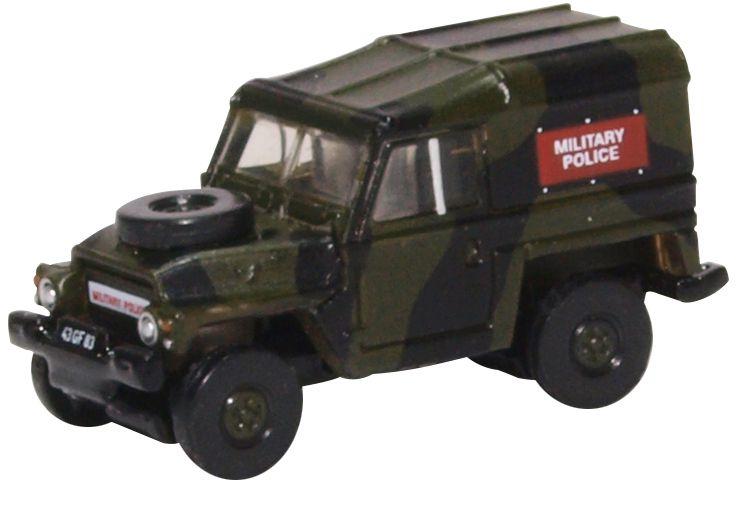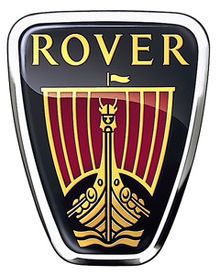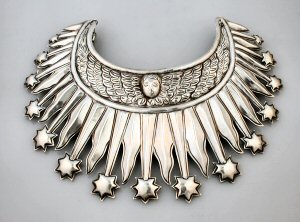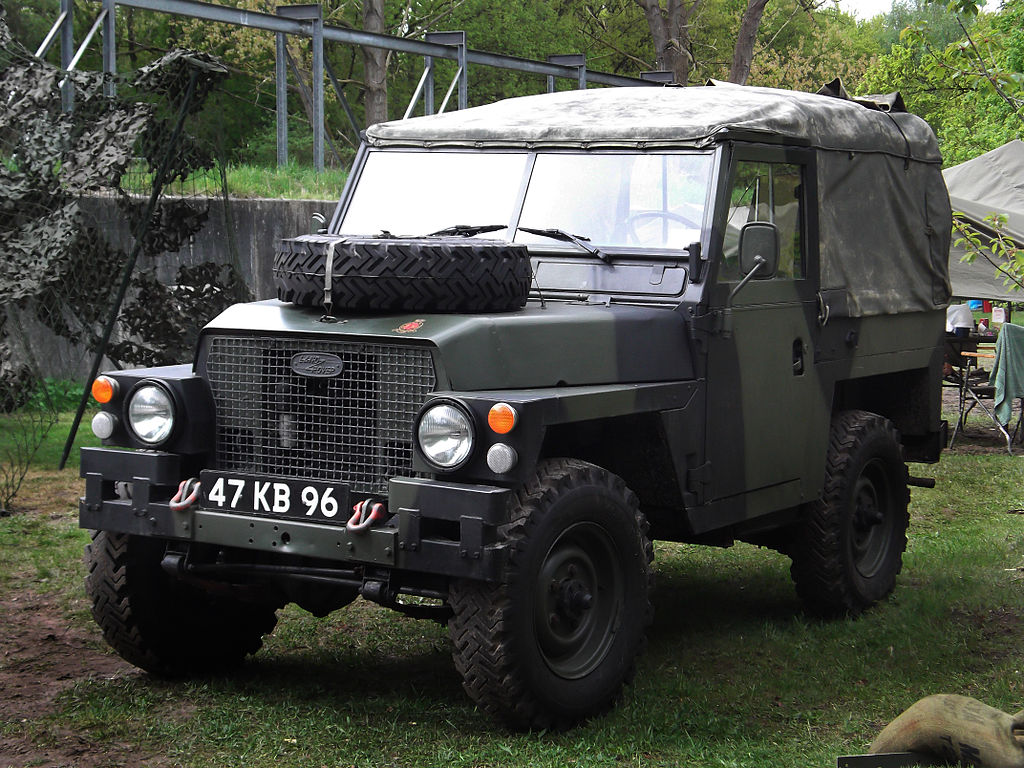Oxford Diecast - NLRL002 - Automobile, Land Rover, 1/2 Ton - British Army - 43 GF 83
| Stock Number | NLRL002 |
| Original Retail Price | £4.35 |
| Brand | Oxford Diecast |
| Manufacturer | Oxford Diecast |
| Body Style | Oxford Diecast Land Rover 1/2 Ton |
| Image Provider's Website | Link |
| Prototype Vehicle | Automobile, Land Rover, 1/2 Ton (Details) |
| Road or Company Name | British Army (Details) |
| Road or Reporting Number | 43 GF 83 |
| Paint Color(s) | Camouflage Green and Olive |
| Print Color(s) | White |
| Additional Markings/Slogan | Military Police |
| Release Date | 2018-08-01 |
| Item Category | Vehicles |
| Model Type | Automobile |
| Model Subtype | Land Rover |
| Model Variety | Lightweight |
| Prototype Region | Europe |
| Prototype Era | UK Era 6: BR pre-TOPS (1967-1971) |
| Scale | 1/148 |
Specific Item Information:
The Land Rover ½ ton lightweight in Military Police guise. In black and olive camouflage drab, the Military Police signage is bright red out of white on the front and conversely on the Land Rover sides.
Prototype History:
In the early 1960s both the Royal Marines, then largely based aboard commando carriers, and the British Army required a vehicle that could be carried by air. They had taken delivery of the Westland Wessex helicopter, which could carry a 2,500 lb (1,134 kg) load slung beneath.
The smallest Land Rover available at the time was a Series IIA 88 inch (2235 mm) wheelbase, which was too heavy. Land Rover began work on a lightweight version to fit the specifications in 1965. A new modification to the basic Series IIA was devised by making many body components easily detachable and removing many non-essential items. The result was the Land Rover Half-Ton, known widely as the Lightweight or Airportable. In practice, to reduce weight sufficiently for the helicopters of the day to lift them in combat conditions, the tilt (roof) and sticks, the upper parts of the body, the doors and windscreen were removed, to be refitted later. The most significant change, however, was a reduction in width by 4 inch (100 mm), by redesigning the standard Series IIA axles and fitting shorter half-shafts, which meant it would fit on a standard pallet.
Complete, the Lightweight IIA weighed 2,650 lb (1,202 kg), over the specified weight. The term Lightweight appears misleading as a standard 88 Land Rover weighed 1,318 kg (2,906 lb), but the higher total weight was due to the various frame reinforcement required for military usage. However, with the removable body panels taken-off it was below the limit. Since improvements to the helicopters meant more lift was available, the MoD accepted it for use. The main applications were actually to be shipped by cargo aircraft or stacked on train wagons, with helicopter transport a rare occurrence.
The smallest Land Rover available at the time was a Series IIA 88 inch (2235 mm) wheelbase, which was too heavy. Land Rover began work on a lightweight version to fit the specifications in 1965. A new modification to the basic Series IIA was devised by making many body components easily detachable and removing many non-essential items. The result was the Land Rover Half-Ton, known widely as the Lightweight or Airportable. In practice, to reduce weight sufficiently for the helicopters of the day to lift them in combat conditions, the tilt (roof) and sticks, the upper parts of the body, the doors and windscreen were removed, to be refitted later. The most significant change, however, was a reduction in width by 4 inch (100 mm), by redesigning the standard Series IIA axles and fitting shorter half-shafts, which meant it would fit on a standard pallet.
Complete, the Lightweight IIA weighed 2,650 lb (1,202 kg), over the specified weight. The term Lightweight appears misleading as a standard 88 Land Rover weighed 1,318 kg (2,906 lb), but the higher total weight was due to the various frame reinforcement required for military usage. However, with the removable body panels taken-off it was below the limit. Since improvements to the helicopters meant more lift was available, the MoD accepted it for use. The main applications were actually to be shipped by cargo aircraft or stacked on train wagons, with helicopter transport a rare occurrence.
Road Name History:
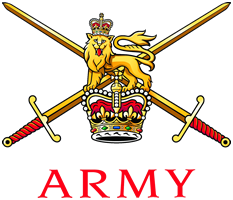 The British Army is the principal land warfare force of the United Kingdom, a part of British Armed Forces. As of 2019, the British Army comprises just over 79,300 trained regular (full-time) personnel and just over 27,200 trained reserve (part-time) personnel.
The British Army is the principal land warfare force of the United Kingdom, a part of British Armed Forces. As of 2019, the British Army comprises just over 79,300 trained regular (full-time) personnel and just over 27,200 trained reserve (part-time) personnel.
The modern British Army traces back to 1707, with an antecedent in the English Army that was created during the Restoration in 1660. The term British Army was adopted in 1707 after the Acts of Union between England and Scotland. Members of the British Army swear allegiance to the monarch as their commander-in-chief, but the Bill of Rights of 1689 requires parliamentary consent for the Crown to maintain a peacetime standing army. Therefore, Parliament approves the army by passing an Armed Forces Act at least once every five years. The army is administered by the Ministry of Defence and commanded by the Chief of the General Staff.
The British Army has seen action in major wars between the world's great powers, including the Seven Years' War, the Napoleonic Wars, the Crimean War and the First and Second World Wars. Britain's victories in these decisive wars allowed it to influence world events and establish itself as one of the world's leading military and economic powers. Since the end of the Cold War, the British Army has been deployed to a number of conflict zones, often as part of an expeditionary force, a coalition force or part of a United Nations peacekeeping operation.

The modern British Army traces back to 1707, with an antecedent in the English Army that was created during the Restoration in 1660. The term British Army was adopted in 1707 after the Acts of Union between England and Scotland. Members of the British Army swear allegiance to the monarch as their commander-in-chief, but the Bill of Rights of 1689 requires parliamentary consent for the Crown to maintain a peacetime standing army. Therefore, Parliament approves the army by passing an Armed Forces Act at least once every five years. The army is administered by the Ministry of Defence and commanded by the Chief of the General Staff.
The British Army has seen action in major wars between the world's great powers, including the Seven Years' War, the Napoleonic Wars, the Crimean War and the First and Second World Wars. Britain's victories in these decisive wars allowed it to influence world events and establish itself as one of the world's leading military and economic powers. Since the end of the Cold War, the British Army has been deployed to a number of conflict zones, often as part of an expeditionary force, a coalition force or part of a United Nations peacekeeping operation.
Manufacturer Information:
Established in 1993, Oxford Diecast is a British Company that specializes in high-quality die-cast metal vehicles. Produced in various scales, the firm's models are marketed as collector items, gifts, and promotional products. Their largest production goes to OO scale (1:76) and in 2015 they introduced railway products under 'Oxford Rail' brand.
Their N-scale collection is using the 1:148 scale ratio as most British manufacturers.
Their N-scale collection is using the 1:148 scale ratio as most British manufacturers.
Item created by: gdm
on 2018-08-14 11:37:28
If you see errors or missing data in this entry, please feel free to log in and edit it. Anyone with a Gmail account can log in instantly.
If you see errors or missing data in this entry, please feel free to log in and edit it. Anyone with a Gmail account can log in instantly.


